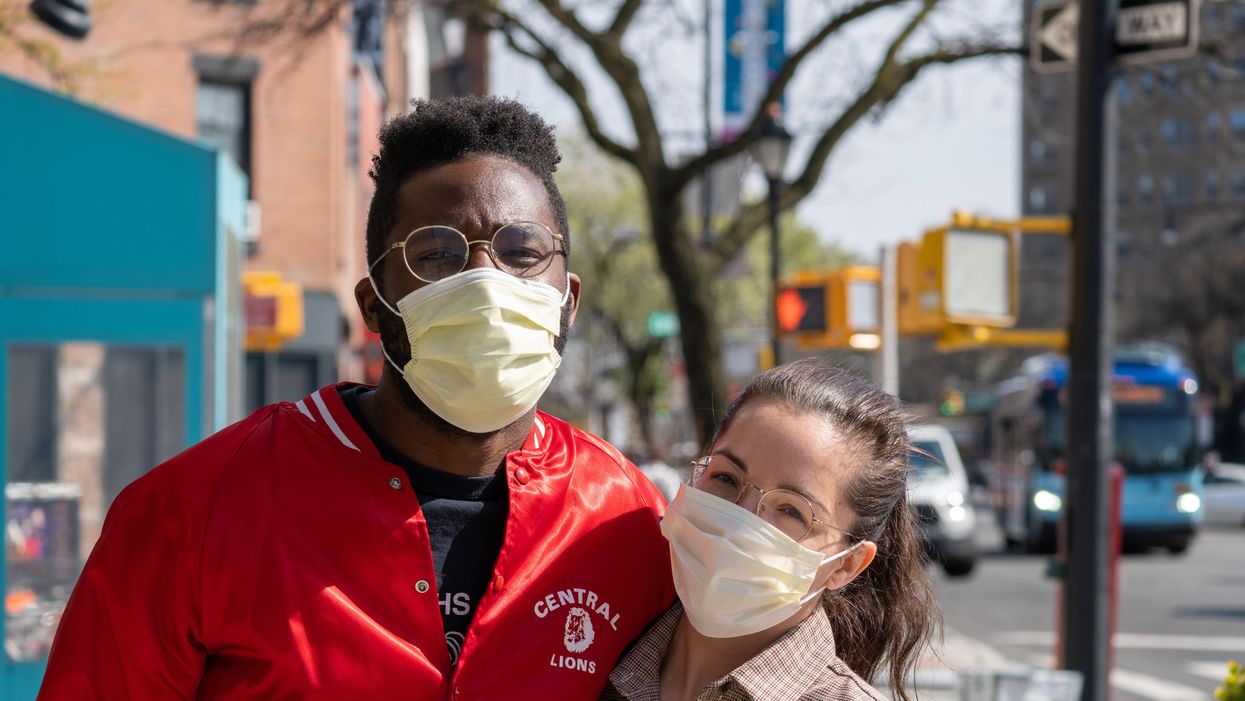What We Will (Surprisingly) Miss About Masks
When told to wear face masks two COVID-plagued winters ago, we thought: "Can't wait until this is over and we no longer have to wear a piece of cloth over our mouth and nose. It's ugly. It interferes with breathing. It muffles voices and makes some conversations hard to follow."
But wear face masks we did. And responsible people still do — without voicing complaint — in establishments that require them and in other social gatherings where they are recommended. Members of my pod, even if they've been fully vaccinated, stick to the program if only to avoid making trouble for workers and others tasked with enforcing the rules.
But now that the Centers for Disease Control and Prevention is lightening up on the number of situations in which the public should wear face masks, our conversations have moved on. The CDC most recently advised that fully vaccinated people no longer need masks outdoors unless they are in a crowd. We are imagining a time when they might not be necessary at all. And this has led us to muse about the things we will actually miss when we no longer feel obliged to wear them.
For starters, we will miss how they helped us avoid other diseases spread by human contact. I haven't caught a single cold or suffered a stomach virus since the COVID prevention rules went into effect in March 2020.
Evidence mounts that masks — plus hand-washing, plus social distancing — have slashed the flu death toll. In the 2019-2020 flu season, the U.S. saw 24,000 to 62,000 deaths from influenza. By contrast, the number of flu deaths this time was 500 as of April 1, and the season will be over at the end of the month. Thus, there may be a case for continuing to wear face masks in densely packed crowds, say, in airports or on public transportation.
On the lighter side, pod members spoke about how having their mouths covered freed them from intense worry about their breath or food stuck in their teeth. Another advantage of masks is that in cold climates, they keep the bottom half of the face warm. And on the street, they bestowed a pleasant veil of privacy and even mystery that many will miss.
Then there was lipstick. What was the point of lipstick if no one would see it behind a mask? We who wore it will probably wear it again.
In the pre-COVID days, some attention was paid to an economic indicator dubbed the "lipstick index." After the downturn following 9/11, Leonard Lauder, heir to the Estee Lauder makeup company, made this prediction: As financially strapped consumers avoided big purchases, such as cars, they would instead reach for small luxuries such as lipstick. In other words, when the economy goes down, lipstick sales go up.
Of course, masks made the lipstick index irrelevant, not that it was taken very seriously before. Lipstick sales plunged despite the early COVID-sick economy. Interestingly, sales of skin care and body care products, particularly body creams, remained strong.
Starting in March, makeup sales saw something of an uptick but still haven't recovered from the falloff early in the pandemic, according to market research company NPD. And though online sales remain strong, brick-and-mortar stores are now doing a better business in skin care and hair products, a reflection of more people leaving home to shop. As more faces come out in public, cosmetic counters may get very busy.
What a strange time this has been. It's been strange for so long that going back to what was normal may itself feel strange. And as we think about it, some of it will be missed.
Follow Froma Harrop on Twitter @FromaHarrop. She can be reached at fharrop@gmail.com. To find out more about Froma Harrop and read features by other Creators writers and cartoonists, visit the Creators webpage at www.creators.com.









